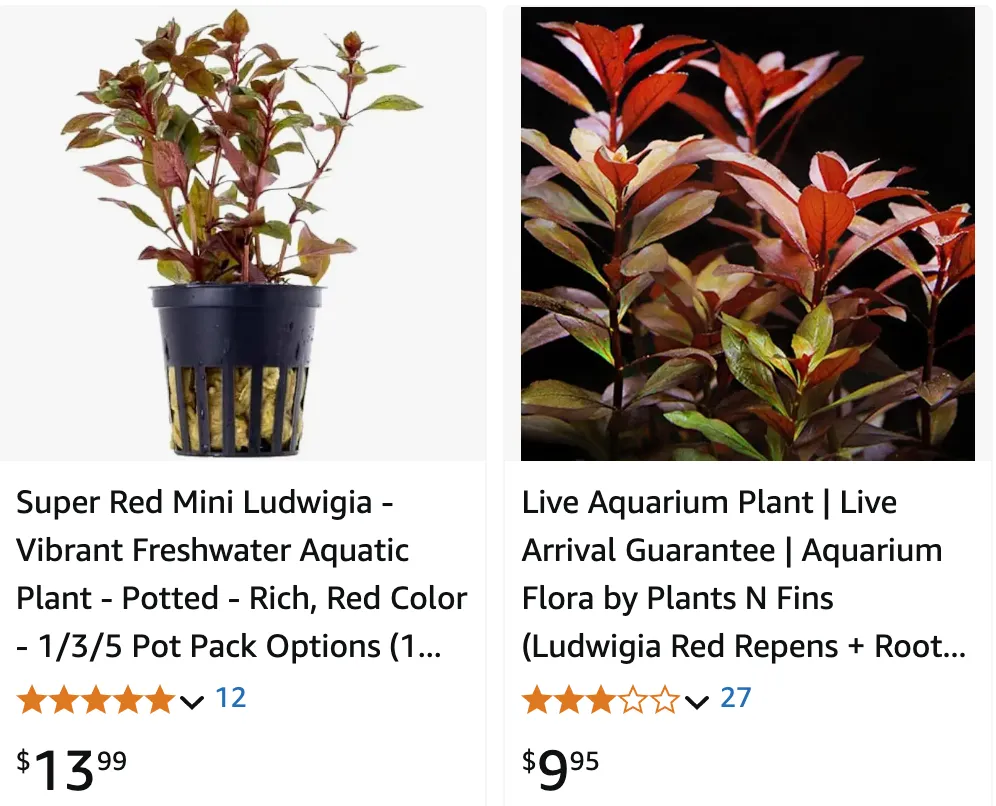
February 2 – Ludwigia
"Born on February 2, Ludwigia, the water primrose, defines you."
Thriving near water, Ludwigia symbolizes adaptability and flow. You are graceful and resilient, effortlessly navigating life’s ups and downs. Your calm presence has a way of soothing those around you.
My Fascination with Ludwigia: A World of Water-Loving Wonders
As a plant enthusiast, I’m constantly drawn to the diversity and beauty of the natural world. One genus that has particularly captured my attention is Ludwigia, a fascinating group of aquatic plants with a global presence. These plants belong to the Onagraceae family, often known as primrose-willows, water-purslanes, or water-primroses, thrive in wet environments, from marshes and ponds to rivers and lakes. Their adaptability and striking features make them a favorite among botanists, aquarists, and nature lovers alike.
Diverse Forms and Habitats
What I find most intriguing about Ludwigia is the sheer variety within the genus. These plants exhibit a remarkable range of forms, from small, creeping herbs to larger, erect shrubs. Some species are fully aquatic, with submerged leaves and stems, while others are emergent, with foliage extending above the water’s surface. This diversity allows Ludwigia to colonize a wide array of habitats, contributing to the rich tapestry of wetland ecosystems.
A Closer Look at Ludwigia Species
The genus Ludwigia encompasses a vast number of species, each with its own unique characteristics. Here are:
- Ludwigia abyssinica A.Rich.
- Ludwigia adscendens (L.) H.Hara
- Ludwigia affinis (DC.) H.Hara
- Ludwigia africana (Brenan) H.Hara
- Ludwigia alata Elliott
- Ludwigia albiflora Ramamoorthy
- Ludwigia alternifolia L.
- Ludwigia anastomosans (DC.) H.Hara
- Ludwigia arcuata Walter Plant FAQs: Ludwigia Arcuata
- Ludwigia bonariensis (Micheli) H.Hara
- Ludwigia brachyphylla (Micheli) H.Hara
- Ludwigia brenanii H.Hara
- Ludwigia brevipes (B.H.Long ex Britton, A.Braun & Small) Eames
- Ludwigia bullata (Hassl.) H.Hara
- Ludwigia burchellii (Micheli) H.Hara
- Ludwigia caparosa (Cambess.) H.Hara
- Ludwigia curtissii Chapm.
- Ludwigia decurrens Walter
- Ludwigia densiflora (Micheli) H.Hara
- Ludwigia dodecandra (DC.) Zardini & P.H.Raven
- Ludwigia elegans (Cambess.) H.Hara
- Ludwigia epilobioides Maxim.
- Ludwigia erecta (L.) H.Hara
- Ludwigia filiformis (Micheli) Ramamoorthy
- Ludwigia foliobracteolata (Munz) H.Hara
- Ludwigia glandulosa Walter
- Ludwigia grandiflora (Michx.) Greuter & Burdet
- Ludwigia hassleriana (Chodat) Ramamoorthy
- Ludwigia helminthorrhiza (Mart.) H.Hara
- Ludwigia hexapetala (Hook. & Arn.) Zardini, H.Y.Gu & P.H.Raven
- Ludwigia hirtella Raf.
- Ludwigia hookeri (Micheli) H.Hara
- Ludwigia humboldtiana Funez, D.M.Farias, Hassemer & Gasper
- Ludwigia hyssopifolia (G.Don) Exell
- Ludwigia inclinata (L.f.) M.Gómez
- Ludwigia irregularis Funez, Hassemer, D.M.Farias & Gasper
- Ludwigia irwinii Ramamoorthy
- Ludwigia jussiaeoides Desr.
- Ludwigia × lacustris Eames
- Ludwigia lagunae (Morong) H.Hara
- Ludwigia lanceolata Elliott
- Ludwigia laruotteana (Cambess.) H.Hara
- Ludwigia latifolia (Benth.) H.Hara
- Ludwigia leptocarpa (Nutt.) H.Hara
- Ludwigia linearis Walter
- Ludwigia linifolia Poir.
- Ludwigia litoranea Cocco & Boldrini
- Ludwigia longifolia (DC.) H.Hara
- Ludwigia major (Micheli) Ramamoorthy
- Ludwigia maritima R.M.Harper
- Ludwigia martii (Micheli) Ramamoorthy
- Ludwigia mexiae (Munz) H.Hara
- Ludwigia microcarpa Michx.
- Ludwigia multinervia (Hook. & Arn.) Ramamoorthy
- Ludwigia myrtifolia (Cambess.) H.Hara
- Ludwigia neograndiflora (Munz) H.Hara
- Ludwigia nervosa (Poir.) H.Hara
- Ludwigia octovalvis (Jacq.) P.H.Raven Plant FAQs: Ludwigia Octovalvis – Water Primrose
- Ludwigia ovalis Miq.
- Ludwigia palustris (L.) Elliott Plant FAQs: Ludwigia Palustris
- Ludwigia peduncularis (C.Wright ex Griseb.) M.Gómez
- Ludwigia peploides (Kunth) P.H.Raven
- Ludwigia perennis L.
- Ludwigia peruviana (L.) H.Hara
- Ludwigia pilosa Walter
- Ludwigia polycarpa Short & R.Peter
- Ludwigia potamogeton (Micheli) H.Hara
- Ludwigia prostrata Roxb.
- Ludwigia pseudonarcissus (Chodat & Hassl.) Ramamoorthy
- Ludwigia quadrangularis (Micheli) H.Hara
- Ludwigia ravenii C.I.Peng
- Ludwigia repens J.R.Forst. Plant FAQs: Ludwigia Repens
- Ludwigia rigida (Miq.) Sandwith
- Ludwigia sedioides (Bonpl.) H.Hara
- Ludwigia senegalensis (DC.) Troch.
- Ludwigia sericea (Cambess.) H.Hara
- Ludwigia simpsonii Chapm.
- Ludwigia spathulata Torr. & A.Gray
- Ludwigia speciosa (Brenan) Hoch, Goldblatt & P.H.Raven
- Ludwigia sphaerocarpa Elliott
- Ludwigia stenorraphe (Brenan) H.Hara
- Ludwigia stricta (C.Wright ex Griseb.) C.Wright
- Ludwigia suffruticosa Walter
- Ludwigia × taiwanensis C.I.Peng
- Ludwigia tepicana M.E.Jones
- Ludwigia tomentosa (Cambess.) H.Hara
- Ludwigia torulosa (Arn.) H.Hara
- Ludwigia venugopalanii Sindhu Arya, V.Suresh, P.Biju & V.S.A.Kumar
- Ludwigia virgata Michx.
The Importance of Ludwigia
Beyond their aesthetic appeal, Ludwigia species play a vital role in their ecosystems. They provide habitat and food for a variety of aquatic organisms, including fish, insects, and amphibians. Their dense growth helps to stabilize shorelines and prevent erosion. Some species are even used in phytoremediation to remove pollutants from water bodies.
Challenges and Conservation
Despite their resilience, Ludwigia species face challenges, particularly from habitat loss and the introduction of invasive species. Climate change also poses a threat, as rising temperatures and altered precipitation patterns can disrupt wetland ecosystems. Conservation efforts are crucial to protect these valuable plants and ensure their continued presence in our natural world.
My Personal Connection
My interest in Ludwigia stems from a deep appreciation for the intricate beauty and ecological importance of aquatic plants. I’m fascinated by their adaptations to life in water and their ability to thrive in diverse environments. I believe that understanding and appreciating these plants is essential for fostering a greater connection with nature and promoting conservation efforts.
In the future, I hope to learn more about the genus Ludwigia, exploring its taxonomy, distribution, and ecological roles in greater depth. I’m particularly interested in the use of Ludwigia species in aquascaping and their potential for phytoremediation. By continuing to learn and share my knowledge, I hope to contribute to the appreciation and conservation of these remarkable plants.
If i die, water my plants!



